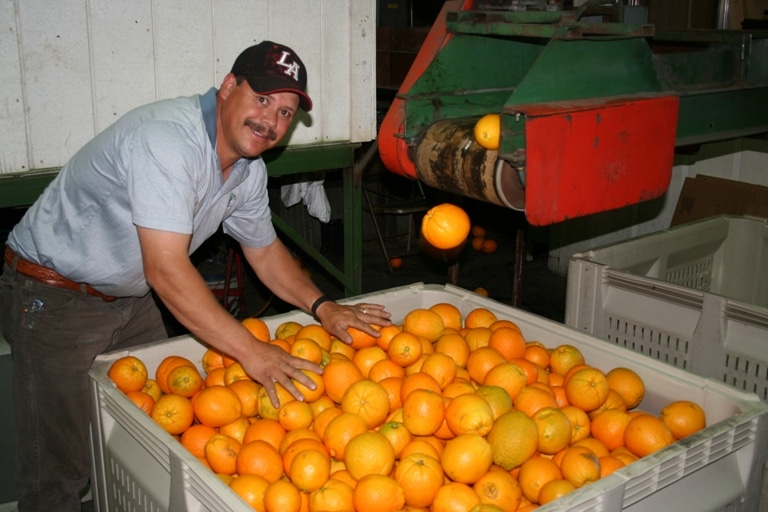
When all the numbers are tabulated, the recently concluded navel orange harvest in California’s Central Valley will likely at least come close to the 68 million cartons predicted before picking began, an industry expert says.
While stormy weather during last year’s bloom led to a smaller crop this season, utilization rates – the fruit that’s marketed as fresh and not diverted to juice – averaged more than 85 percent for the season, says Joel Medina Reyes, director of field operations for California Citrus Mutual.
“The size on the fruit was pretty big and carried out throughout the year,” Reyes says.
Larger fruit was expected, as a September objective measurement report from the National Agricultural Statistics Service found an average diameter of 2.34 inches, above the five-year average of 2.24 inches.
The survey found a fruit set per tree of 273, below the five-year average of 348, according to NASS.
NASS predicted a statewide navel orange crop of 70 million cartons in 2017-18, with most of the oranges grown in the Central Valley. That would be a decline from the 75.6 million cartons produced in the previous season and down considerably from the 91.4 million utilized cartons picked in 2015-16, NASS reports.
The bloom in the spring of 2017 came as California was capping off one of the wettest water years in its history. Storms affected some orchards more than others, leading to lighter crops, particularly in northern areas, industry insiders say.
Another issue was the heat last summer, Reyes says.
“I know last year the heat had a lot to do with some fruit drop,” he says. “That’s one of the reasons why navels were low this year.”
Prices strong
The smaller overall crop size with larger individual fruit kept prices higher for growers, as they remained over $18 per 40-pound carton for much of the season, he says.
"The navel harvest ended up really good," Reyes says. "It benefited a lot of growers. They were happy."
The navel harvest typically starts in mid-autumn and continues into the following summer. The 2017-18 season wraps up as Valencia orange growers are in the midst of harvesting an anticipated 19-million carton crop, which would be lighter than last year’s production of 22 million cartons, according to NASS.
“Valencias seem to be good right now,” Reyes says. Sales “have slowed down for the past couple of weeks but should be picking up, just like every year at the end of July.”
As temperatures have soared into triple digits for much of the last few weeks, citrus packers have been color-sorting Valencias that had to be treated for heat-related re-greening, NASS reports. Much of that fruit stays in the domestic market, as some trading destinations don’t accept fruit treated with sprays that preserve its color.
Reyes says he hasn’t yet heard of instances of fruit drop this summer. But the federal Climate Prediction Center considers it likely that most of the West will be hotter than normal over the next couple of weeks.
The NASS objective measurement report for the 2018-19 navel orange season is due out Sept. 12.
About the Author(s)
You May Also Like






